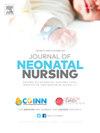全球婴儿先天性心脏病发病率:系统回顾和荟萃分析
Q2 Nursing
引用次数: 0
摘要
背景先天性心脏畸形是最常见的先天性畸形之一,也是先天性疾病导致死亡的主要原因。本研究的目的是通过系统综述和荟萃分析来调查婴儿先天性心脏病的患病率。方法本研究系统地检索了电子数据库,包括 PubMed、Scopus、Science Direct 和 Web of Science,以获取截至 2023 年 3 月全球婴儿先天性心脏病患病率的研究报告。结果在对总样本量为3528.18万人的16项研究进行的综述中,异质性检验(I2)显示异质性很高(I2 = 99.8%),因此采用随机效应模型对结果进行分析。据此,婴儿先天性心脏畸形的全球患病率为 0.003(95% CI:0.002-0.004),更精确的小数点后为 0.0027(95% CI:0.0022-0.0035),即 0.27%,每 1000 名新生儿中有 2.78 例,每 10,000 名新生儿中有 27.8 例。此外,考虑到样本量较大,使用 Begg 和 Mazumdar 相关性检验对研究的发表偏倚进行了评估,结果显示没有明显的发表偏倚(P = 0.566)。室间隔缺损和房间隔缺损的发病率最高,男婴的发病率高于女婴。有必要实施相关政策,降低这些疾病的发病率,并预防由这些疾病导致的婴儿死亡。本文章由计算机程序翻译,如有差异,请以英文原文为准。
Global prevalence of congenital heart diseases in infants: A systematic review and meta-analysis
Background
Congenital heart anomalies, among the most common congenital abnormalities, are the leading cause of mortality resulting from congenital diseases. This study's objective is to investigate the prevalence of congenital heart diseases in infants through a systematic review and meta-analysis.
Methods
This study systematically searched electronic databases, including PubMed, Scopus, Science Direct, and Web of Science, for studies reporting the global prevalence of congenital heart diseases in infants up to March 2023.
Results
In the review of 16 studies with a total sample size of 35,281,800 individuals, the heterogeneity test (I2) indicated high heterogeneity (I2 = 99.8%), and a random-effects model was used to analyze the results. Accordingly, the global prevalence of congenital heart anomalies in infancy was reported to be 0.003 (95% CI: 0.002–0.004) or more precisely with exact decimals 0.0027 (95% CI: 0.0022–0.0035), which is 0.27 percent, 2.78 per 1000 and 27.8 per 10,000 births. Additionally, the assessment of publication bias in the studies, considering the large sample size, was performed using the Begg and Mazumdar correlation test, which showed no significant publication bias (p = 0.566).
Conclusion
Based on the results of this study, it was reported that the global prevalence of congenital heart diseases in infants is increasing annually. Ventricular and atrial septal defects had the highest prevalence, with a higher occurrence in male infants compared to female infants. It is necessary to implement policies to reduce the prevalence of these diseases and prevent infant mortality caused by them.
求助全文
通过发布文献求助,成功后即可免费获取论文全文。
去求助
来源期刊

Journal of Neonatal Nursing
Nursing-Pediatrics
CiteScore
2.00
自引率
0.00%
发文量
143
期刊介绍:
Aims & Scope: This is the practical, bimonthly, research-based journal for all professionals concerned with the care of neonates and their families, both in hospital and the community. It aims to support the development of the essential practice, management, education and health promotion skills required by these professionals. The JNN will provide a forum for the exchange of ideas and information between the range of professionals working in this field; promote cooperation between these professionals; facilitate partnership care with families; provide information and informed opinion; promote innovation and change in the care of neonates and their families; and provide an education resource for this important rapidly developing field.
 求助内容:
求助内容: 应助结果提醒方式:
应助结果提醒方式:


